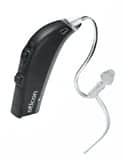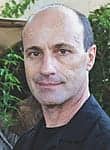Naerum, Denmark —The Ida Institute has released "My World – Understanding Hearing Loss from the Child’s Perspective," a new counseling tool designed to enable clinicians to more effectively elicit the child’s perspective in the hearing rehabilitation process, and thus facilitate more effective management and understanding of the child’s day-to-day challenges.
“My World” uses a child-friendly format to allow the hearing care professional and child to explore together how hearing loss affects the child in daily life and to collaborate on formulating effective goals and strategies that could result in better communication. It also helps to involve the child, the parents, and the audiologist in a shared decision-making process.
“It is not easy to engage the child and to discover their point-of-view. Audiologists often must rely on a parent or teacher to understand a child’s experience of hearing loss,” Lise Lotte Bundesen, Ida Institute managing director, explains. “The My World tool offers a child-friendly framework that helps children get in touch with and express what is important to them. With this insight, hearing care professionals can identify and reinforce communication strategies that are working well and agree upon new strategies to cope with challenges.”

The tool consists of three illustrations depicting different environments: a home, a school. and an outdoor area, as well as a variety of movable pieces that represent the everyday life of a child. By playing with the elements and re-creating scenes from their own lives, children can discuss successes and challenges related to communication and identify which situations are important to them.
For the hearing care professional, My World facilitates open-ended questioning and provides a creative way to stimulate curiosity, joint attention, and shared understanding about aspects of communication most important to the child. Clinicians can discover information about the child’s use of effective communication, reinforce positive patterns and, together with the child, parent, or teacher, formulate a strategy for coping with communication issues.
An instructional video available on the Institute website provides a tutorial on using the My World tool in clinical encounters. A listening guide and a documentation form are also available to help hearing care professionals listen actively to what the child is saying and to keep a record of what was discovered and decided during the appointment.
Visit www.idainstitute.com/myworld for more information.
SOURCE: The Ida Institute




